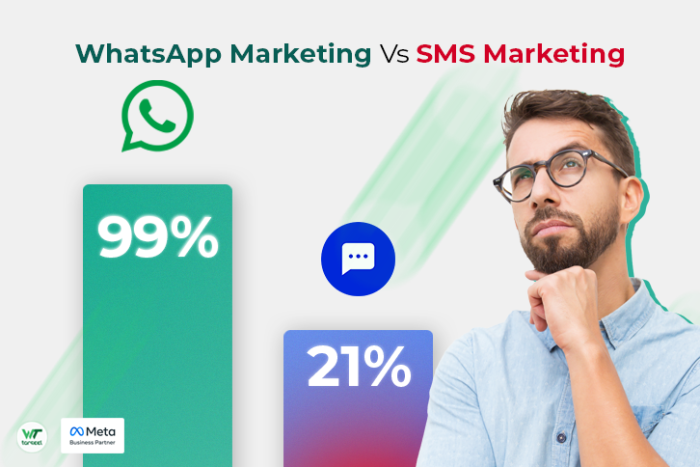Remember when Domino’s Pizza introduced its “Pizza Tracker” via SMS back in the early 2000s? Customers loved it—finally, a way to track their pizza step-by-step from the oven to their door. Fast forward to now, and Domino’s has moved to WhatsApp for real-time updates. Why? Because customers now prefer conversational and interactive messaging.
Marketing is no longer just about sending out messages—it’s about starting meaningful conversations. And when it comes to direct messaging, two platforms dominate: WhatsApp and SMS.
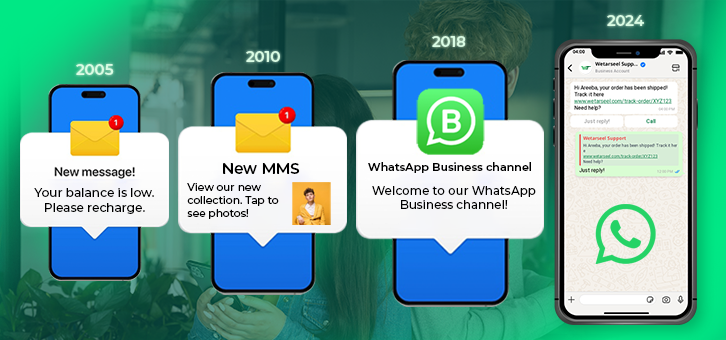
So which one is better for your business? Let’s compare both in detail.
What is WhatsApp and SMS Marketing?
WhatsApp Marketing uses the WhatsApp Business App or API to send messages like order updates, product recommendations, and promotions. It supports media, buttons, and even catalogs.
SMS Marketing uses basic text messages (limited to 160 characters) to reach users directly on their phones, even without internet access.
Both are powerful, but their strengths are very different.
Engagement Rates
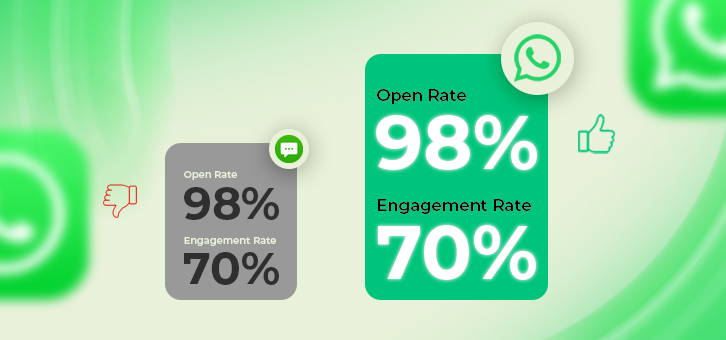
SMS marketing has a 98% open rate and is great for time-sensitive messages like OTPs and appointment reminders.
WhatsApp also has a 98% open rate but supports media and quick replies, leading to better interaction and engagement.
Conclusion: SMS grabs attention fast, but WhatsApp is better for two-way engagement.
Message Length
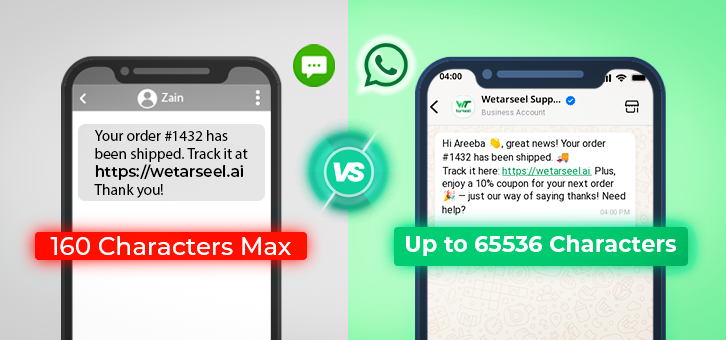
SMS messages are limited to 160 characters. If you go beyond that, the message may break into parts or cost more.
WhatsApp allows up to 65,536 characters, so businesses can share detailed updates, instructions, or stories without restriction.
Conclusion: If you have more to say, WhatsApp gives you the space.
Analytics and Tracking
![]()
SMS offers limited data—you may know if a message was delivered, but not if it was read or clicked.
WhatsApp offers detailed analytics such as delivery status, read receipts, and click-throughs. Businesses can track exactly how users respond.
Conclusion: WhatsApp wins when it comes to performance tracking.
Cost Comparison
SMS usually charges per message. Costs can rise quickly, especially for international campaigns or MMS (multimedia messaging).
WhatsApp uses per messages chargers and is often cheaper for multimedia messages, especially when using the WhatsApp Business API .
Conclusion: WhatsApp is generally more cost-effective for high-volume or rich content messaging with far better ROI.
Reach and Accessibility
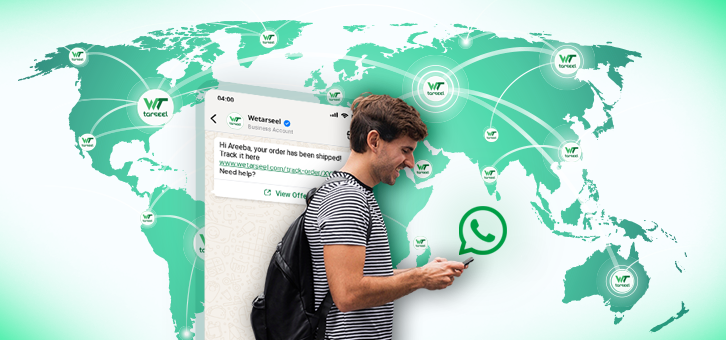
SMS can reach any mobile phone, even without an internet connection. It works everywhere.
WhatsApp requires a smartphone, the app, and internet access. However, it has over 2 billion users worldwide and is especially popular in countries like India, Brazil, and much of Europe.
Conclusion: SMS is more universal, but WhatsApp is more popular where internet and smartphones are common.
Opt-In and Privacy Rules
SMS marketing requires user opt-in, but enforcement may vary by region, which can lead to spam complaints.
WhatsApp strictly requires users to opt in before you can message them. This keeps interactions relevant and reduces spam.
Conclusion: WhatsApp’s strict policies make it more trustworthy for long-term customer relationships.
Integration with Business Tools
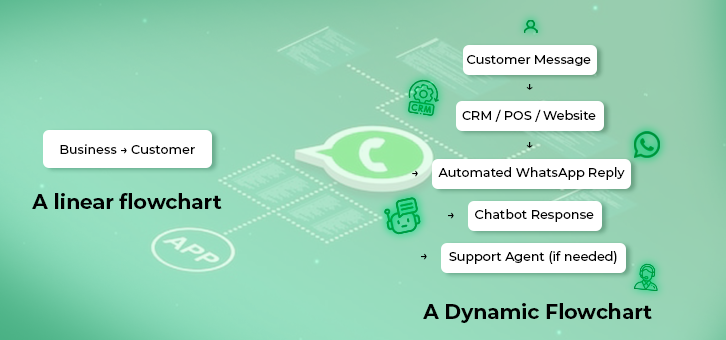
SMS has limited integration with CRMs and automation tools. It often relies on third-party platforms for advanced features.
WhatsApp integrates easily with tools like CRMs, chatbots, e-commerce platforms, and automation systems. The API allows for advanced workflows and personalized messaging.
Conclusion: WhatsApp is ideal for smart, scalable, and automated customer communication.
When to Use Each Channel
Use SMS when:
-
You need to send urgent updates
-
Your audience may not have smartphones
-
You’re sending simple messages like OTPs or alerts
Use WhatsApp when:
-
You want to build relationships
-
You need to send multimedia or catalogs
-
You want interactive conversations
Conclusion: Use SMS for alerts. Use WhatsApp for engagement and customer experience.
Audience Preference
Younger users and digital-native customers tend to prefer WhatsApp.
Older users or those in areas with weak internet access still rely on SMS.
Conclusion: Choose the platform based on your audience’s habits and location.
Final Thoughts
The truth is, it’s not about choosing one over the other. The best strategy is to combine WhatsApp and SMS based on your needs.
Use SMS for quick alerts. Use WhatsApp for rich, ongoing conversations. When used together, they can create a powerful and seamless customer experience.
In 2025, the brands that win will be the ones that connect—not just promote.

